Hybrid Fruits Are the Trendy Treats Nutritionists Are Raving About — Here’s Why
At first glance, you won’t notice anything terribly different while perusing the produce aisle. But a closer look may have you doing a double-take. Hybrid fruits, with names like pluots, limequats and peacharines, sound like something out of a science fiction movie. But it turns out the trendy produce actually dates back to the 18th century. Here’s the lowdown on the hybrid fruits you’re likely to find at your local supermarket, what they can do for your health and the best ways to enjoy them.
Hybrid fruits are surprisingly common
“Hybridizing has been going on for hundreds of years, but we’re just seeing more hybridization in motion at the moment because it’s commercially interesting to do so,” says 20-year produce veteran Josh Alsberg, founder and owner of Rubinette Produce Market in Portland, Oregon. Hybrid fruit is also more prevalent than you may realize, he adds. “A navel orange is actually a hybridized piece of fruit, too. So is grapefruit and many types of apples. Hybridization has been going on a long time, but the average consumer just isn’t aware of it.”
Hybrid fruits are nutritional powerhouses
“Many of the hybrids’ antioxidant properties are actually equal to or higher than the original two parent varieties,” says Kristin A.R. Gustashaw, RDN, a clinical dietitian at Rush University Medical Center in Chicago. And a review of studies in Foods confirms it.

Hybrid fruits are also a refreshing change of pace for your tastebuds, which can help you up your fruit intake. “As a dietitian, I appreciate hybrid produce because it’s helped me interest people in trying more fruits and vegetables,” says Gustashaw. “Plus, I love them for the additional colors and textures they offer. Many varieties also allow for longer growing seasons and may help keep prices lower, being able to ‘buy in season’ longer.”
The 5 tasty hybrid fruits that boost your health
We asked our experts for their favorite hybrids and reveal how the juicy gems help keep you happy and healthy.
1. Pluots (plum + apricot) thwart cravings
The humble plum is actually the superstar of the hybrid bunch because the stone fruit plays well with others. “Pluots [75% plum and 25% apricot] combine the juicy sweetness of plums with the firm texture of apricots,” explains Lauren Manaker, RDN, owner of Nutrition Now Consulting in Charlotte, South Carolina.
And if you're trying to cut back on snacking or shed a few unwanted pounds, pluots can satisfy your sweet tooth without derailing your healthy eating plan. “They’re rich in vitamins A and C," Manaker says. "And the fiber content in these fruits can aid in digestion and promote a feeling of fullness, making them an ideal snack for those looking to maintain a healthy weight.” (Click through to see how a keto hack helps curb cravings, too.)
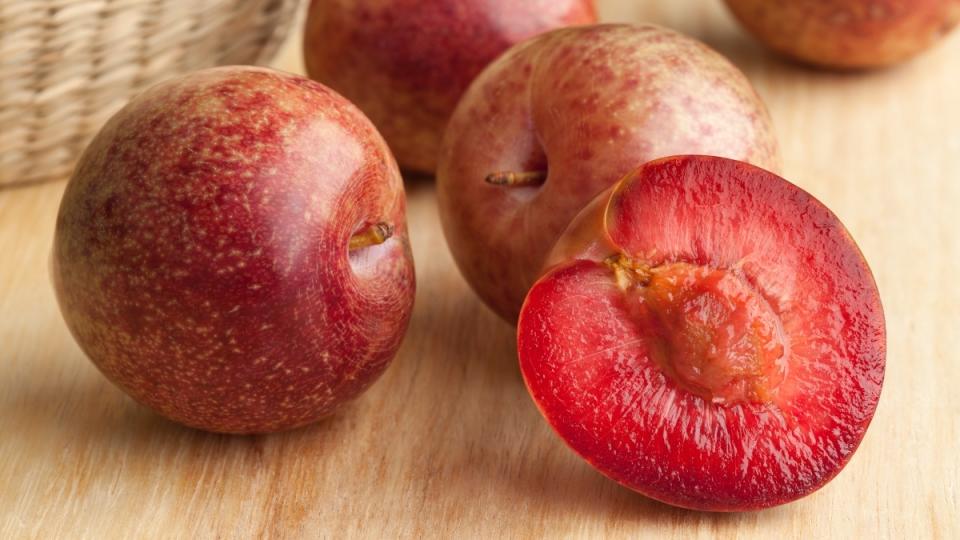
Tip: Other plum hybrids include apriums (25% plum and 75% apricot) and plucots (a 50/50 blend). You can also look for nectaplums (nectarine + plum), which are just about to hit the market, reports Alsberg.
2. Peacharines (peach + nectarine) firm skin
If you’re a sucker for the sweet and juicy taste of peaches (who isn’t?) but aren’t a fan of the fuzz, consider a peacharine. With a little over 2 grams of fiber, peacharines have a similar taste to a peach with the firmness of a nectarine. They're also a boon for your skin, thanks to their high water content, vitamin C and carotenoids — which are converted to vitamin A in the body — beta-carotene, alpha hydroxy acids (AHAs), copper and niacin.
A study in Nutrients found these vitamins and minerals help build collagen for firmer skin, protect your complexion from harmful UV rays and improve lax skin. If you're interested in other peach-related hybrids, try the peacotum (peach + apricot + plum).
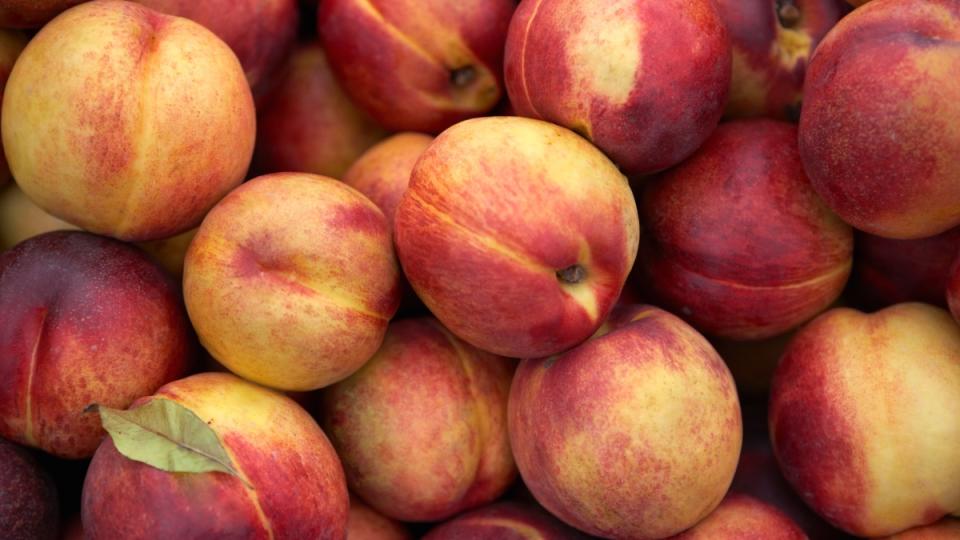
Related: Sweet and Savory Nectarine Pork Chops Recipe Preps in Just 10 Minutes
3. Pineberries (red + white strawberries) tame inflammation
While some hybrids don’t look remarkably different than their parent fruit, pineberries stand out from the produce pack. The white berries with red seeds originated in Chile thousands of years ago and are the combination of two types of strawberries. They get their name from their pineapple taste (although the tropical fruit itself is not an ingredient).
“When you bite into one, don’t expect a strawberry flavor," says Philadelphia-based nutritionist Libby Mills RDN, host of Libby’s Lunch podcast. "They taste more like a pineapple, with a hint of a pear or apricot. I like to think of a pineberry as a great vacation for your tastebuds.”
The tropical-tasting gems are also a smart way to tamp down harmful inflammation. The reason? Pineberries contain phenolic acids and flavanoids such as gallic acid, quercetin and kaempferol, which have recently been studied for their anti-inflammatory benefits.
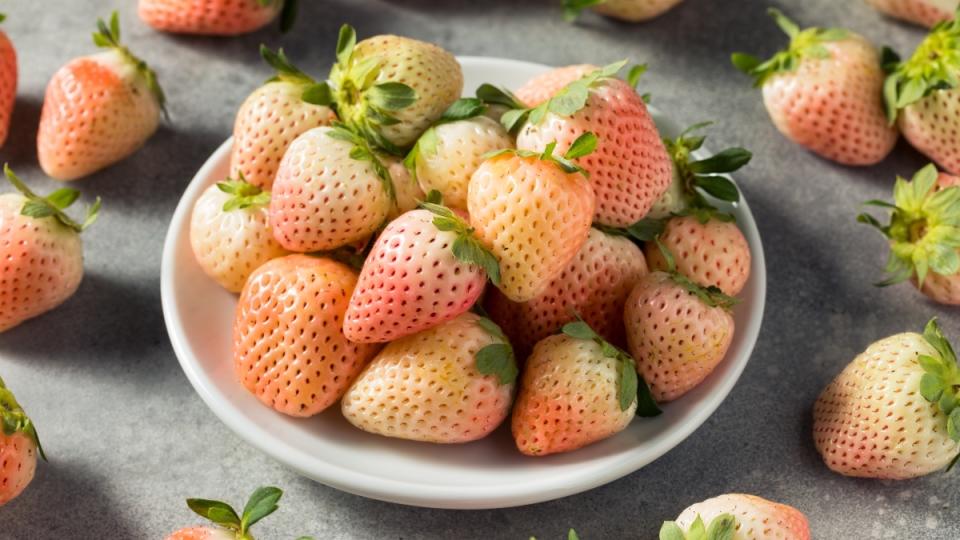
4. Shasta golds (temple + dancy + encore tangerines) boost immunity
Not all hybrids are made from different fruit species, and this tangerine hybrid is one of Alsberg’s favorites. Released in 2002 from the University of California-Riverside, they are a blend of three different tangerines. “They’re super juicy with a fantastic flavor and a robust, perfect sweet-tart balance,” he says.
They’re also seedless and easy to peel, and are a great way to get immune-boosting vitamin C (an average tangerine has 26 mg, about 1/3 of the daily recommended 75 mg for women). Vitamin C is best known for keeping your immune system in tip-top shape, thanks to its ability to stimulate white blood cells. It's even been shown to prevent and treat respiratory infections, too.
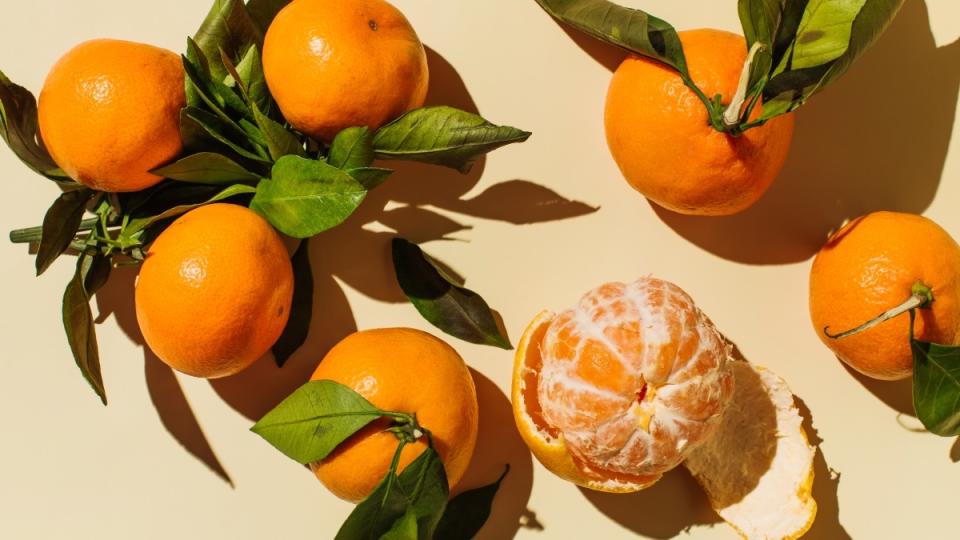
Related: Zinc and Quercetin Dramatically Boost Your Immunity, Say Doctors — And They’re Stronger Together
5. Limequats (lime + kumquat) lower blood pressure
Dating back to 1909, limequats are considered the “best of both worlds” between a key lime and a kumquat. They combine the tart zing of a key lime with the sweet, edible peel of the kumquat. Their high potassium level has been shown to lower blood pressure, and the powerhouse fruit also contains a dense blend of vitamins A, C, B, calcium, iron and fiber. Another similar citrus hybrid is a mandarinquat (mandarin + kumquat), also known as an orangequat. (Click through to see what to drink to lower blood pressure naturally.)
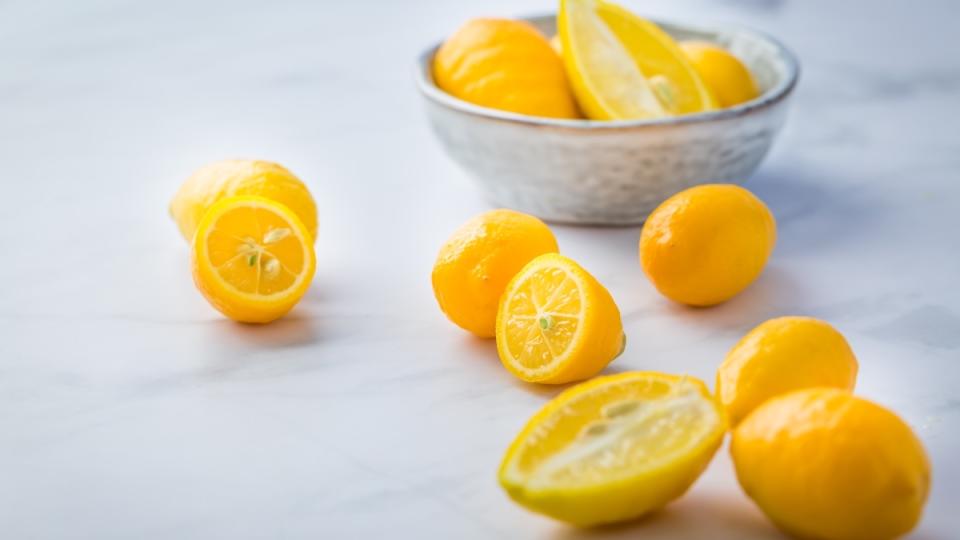
Hybrid fruits are not GMO
Perhaps the biggest misconception about hybrid fruits is that they are genetically modified. But that's not so, says Manaker. “Hybrid fruits are the result of cross-pollination, where two varieties of a species are intentionally crossbred to produce an offspring that inherits desired traits from both parents,” she explains. “This natural process has been used for centuries to enhance flavor, yield and resistance to pests and diseases. GMOs, on the other hand, involve directly altering the DNA of the plant in a lab.”
4 ways to enjoy hybrid fruits
So you’ve brought a few pluots or limequats home from the store and you’re ready to reap the health-boosting benefits. Now what? We asked our experts for their favorite suggestions.
Get out the grill: “Stone fruits do exceptionally well on the grill,” says Mills. Add pluots, peacharines and pineberries to a skewer and drizzle them with limequat juice, she suggests. Or add grilled pluots to a pizza with goat cheese, suggests Lori Barrett, RDN, a nutrition coach with Top Nutrition Coaching.
Make a fruit caprese salad: “Slice a pluot and an aprium and layer that with baby mozzarrella balls and maybe some mint,” suggests Mills. “Not only is it eye-catching with those rich fruit colors, but it’s bursting with flavor. Drizzle that with a simple vinaigrette using the juice from a limequat. Then use some of that sweet zest of the rind.”
Get on board: Create a charcuterie board feast with goat cheese, crackers and a juicy fruit hybrid like a pluot or peacharine for a refreshing update to popular picnic fare, suggests Barrett.
Toss them in a smoothie: “Take advantage of the edible limequat peel by adding it to a smoothie with frozen mango and pineapple, kale, ginger and yogurt,” suggests Mills. “For one, it’s super-delicious. And with the rind in there, now you have the benefits of the extra antioxidants and fiber.”
For more delicious foods and drinks that boost your health:
What to Drink to Lower Blood Pressure: MDs Reveal the Best Heart-Smart Drinks
These 9 Simple (and Delicious!) Food Swaps Significantly Lower Diabetes Risk, Say MDs
These Teas Ease Allergies Naturally + the Timing Trick That Boosts the Benefit
This content is not a substitute for professional medical advice or diagnosis. Always consult your physician before pursuing any treatment plan.

